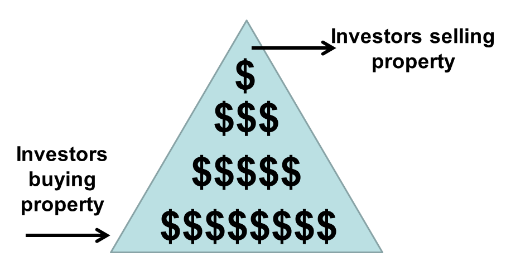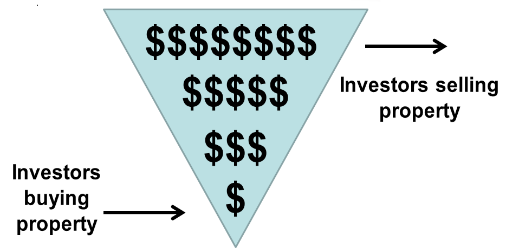Property market ponzi schemes
by John Lindeman
The unique feature of Ponzi schemes is that they use money collected from new investors to pay out existing investors. This means that when the number of new investors starts to fall, they can suddenly crash.
But be warned – they exist in our housing markets.
Property booms often start with a genuine rise in demand for housing, but sometimes they can turn into speculative bubbles driven by the expectation of higher prices, rather than being based on a genuine need for accommodation.
When this happens, we have the makings of a property market Ponzi. So who was Ponzi and why do such schemes ultimately crash?

Charles Ponzi started buying US post reply paid coupons in countries where they were cheap such as Italy, and then selling them in the USA where they were worth far more.
Using this simple strategy, he was able to promise investors returns of up to 50% and more, but the actual profits soon proved to be less than anticipated. So, Ponzi started using money from new investors to pay out earlier investors, and to attract more new investors offered even higher returns – up to 100%.
As long as the number of new investors stayed above the number of maturing investments, the scheme kept growing, with huge numbers of people taking part and enormous sums of money being invested.
Soon, however, investigators discovered that his scheme was not based on post reply paid coupons at all, but was a pyramid selling scheme which paid out profits by obtaining more new investors. The scheme quickly collapsed with investors losing almost everything and Ponzi was jailed.
Property booms often start out in the same way that Ponzi’s scheme did, based on genuine demand for housing in which investors can participate. They can also turn into bubbles created by speculative demand from investors in which renters and home buyers no longer take part, and so they turn into Ponzis.

Speculative booms begin like pyramids, with the number of investors buying property much greater than those who want to sell.
The increasing demand pushes prices up and creates more buyer demand, which then pushes prices up further.
The pyramid quickly turns turtle when the number of investors trying to sell starts to exceed the number wanting to buy. This causes prices to fall, and so more investors want to sell.
Prices can then crash when virtually every investor is trying to sell and none want to buy.

This type of crash only occurs in markets controlled by investors because unlike home buyers, they don’t live in the properties they own.
It’s encouraging to know that the stability of the property market comes from the fact that most property buyers are not investors at all, but owner-occupiers who are not seeking cash flow or price growth, but a secure home to live in.
This is why the only areas of our property markets that can experience such Ponzi type crashes are those where investors own most of the properties, and even then a crash can only occur if the demand for properties is purely speculative and not underwritten by a genuine need for housing.